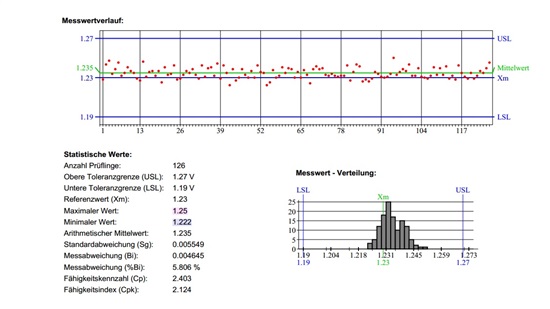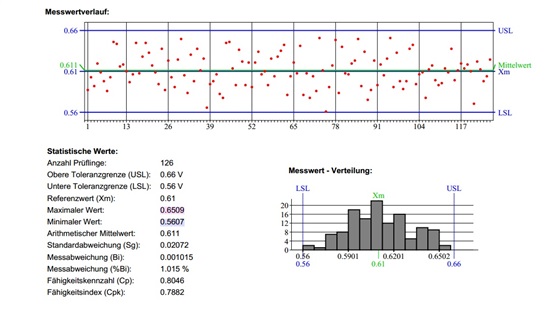Hello
I have an application of LMP8603 amplifying a low side 2mOhm shunt, with 3.3V supply
Offset is biased at the half of the ADC reference voltage (typ 2.44V) through a buffer amplifier as required by datasheet. Mid-Scale Error is specified as 1.5% max in datasheet.
The board is now in full production, so I have some statisical functional test background.
So here is the dispersion on the last batch on the voltage feeding the OFFSET pin mean value 1.235V, standard deviation of 5.5mV, i.e 0.44% of mean value.
And then, here is the dispersion on the amplifier output, without any current in the shunt.
Now the mean value is 0.611V, and the standard dev is 20mV, i.e 3.2% of the mean value.
So the question is why there is such a dispersion on the offset on the output of the amplifier ? Any way to reduce it ?
Because if I want to fix the upper and lower limit of the measure not to reject good boards, it will be a tolerance of around 20%, a not acceptable range.
Hope to read some answer soon!!
Christophe



